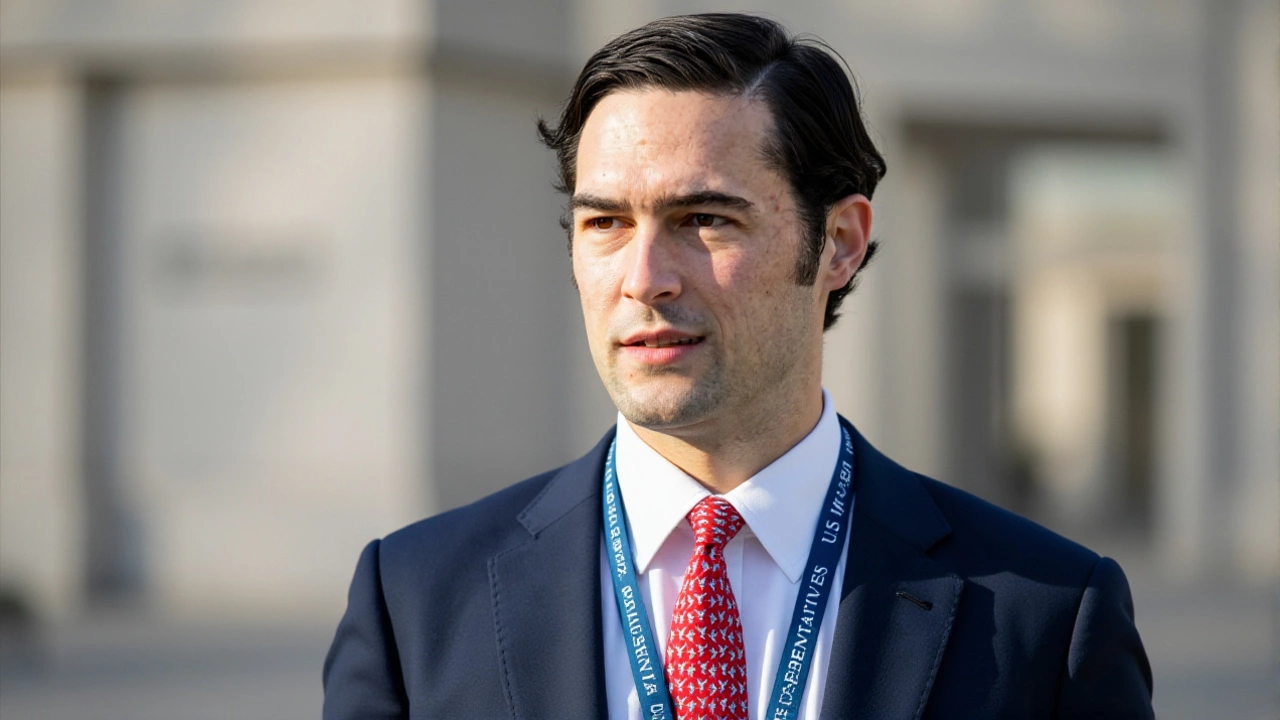When Daniel Penny, a 25‑year‑old Marine veteran, was brought before a Manhattan jury on December 9, 2024, the world watched a legal showdown that began on a northbound F train two years earlier.
During the NYC subway chokehold incidentManhattan, New York City, Jordan Neely, a 30‑year‑old homeless man, spiraled into a volatile confrontation that ended with his death. The trial, which opened on November 1, 2024, hinged on whether Penny’s chokehold – a move he learned in the Marine Corps – was a reasonable act of self‑defense or an unlawful use of force under New York Penal Law § 35.15.
- Date of incident: May 1, 2023, ~2:00 p.m. EDT
- Location: Northbound F train, Second Avenue station, Manhattan
- Defendant: Daniel Penny
- Victim: Jordan Neely
- Verdict: Not guilty of criminally negligent homicide
Background: How the confrontation unfolded
According to independent journalist Juan Alberto Vázquez, Neely boarded the train chanting, “I don’t have food, I don’t have a drink, I’m fed up… I’m ready to die.” While his words startled passengers, witnesses say he didn’t physically assault anyone, though a few reported him tossing trash and charging at commuters, prompting a mother to shield her child behind a stroller.
Enter Penny, who was on his way to a gym. Within 30 seconds of Neely’s outburst, Penny placed the man in a chokehold. Video captured by bystanders shows the hold lasting at least three minutes, though prosecutors later testified it continued for six. Penny himself later said the restraint lasted about five minutes.
The trial: Key players and courtroom drama
Assistant District Attorney Jennifer Gaffney opened with a stark warning: “Mr. Penny, though you may have acted with good intentions, you recklessly used excessive force.” In contrast, defense attorney Marc Fernich painted Penny as a protector forced into a split‑second decision.
Testimony streamed from multiple angles. Dr. Barbara Sampson, New York City’s Chief Medical Examiner, described Neely’s injuries as consistent with prolonged strangulation. Meanwhile, renowned forensic pathologist Dr. Werner Spitz challenged the autopsy’s conclusions, arguing that other medical factors could have contributed to death.
The prosecution also called several MTA employees and police officers who were on the train, as well as a bystander who helped restrain Neely. On the defense side, Penny’s mother took the stand, flanked by two Marine platoon sergeants who attested to his character and training.
Jury composition and deliberations
The 12‑person jury, plus four alternates, reflected Manhattan’s diversity: seven women, five men; at least seven White members, one Hispanic, one Filipino, one Black, and one of Middle Eastern descent. Their notes to Judge Robert A. Fresca revealed a painstaking process – from requesting a read‑back of judge’s instructions to asking for additional video footage. After weeks of back‑and‑forth, jurors finally returned a unanimous not‑guilty verdict on the criminally negligent homicide count, having previously deadlocked on the more serious manslaughter charge.
Reactions: A city divided
Outside the courtroom, emotions ran high. Some protesters shouted curses at Penny, calling the verdict a miscarriage of justice for Neely’s family. Others, including several commuter advocacy groups, hailed the decision as a vindication of ordinary citizens stepping in when “the system failed to protect them.” The debate spilled onto social media, reigniting conversations about public safety, vigilantism, and the role of race in legal outcomes.
Legal analysts, such as professor Emily Ramos of Columbia Law School, noted that the case could set a precedent for how New York courts interpret “reasonable force” in public spaces. “If the jury’s reasoning leans on the perceived threat Neely posed, we might see a shift in how self‑defense claims are evaluated in crowded urban settings,” Ramos said.

Potential civil fallout
Even though the criminal case is closed, the Neely family’s attorney, Andrew Kaplan, has hinted at a forthcoming civil lawsuit. The claim could target both Penny and the Metropolitan Transportation Authority, arguing that inadequate security measures contributed to the tragedy.
Experts estimate that a civil suit could seek damages ranging from $2.5 million to $5 million, based on prior wrongful‑death cases involving public transportation. The MTA has already faced criticism for its “stop‑gap” security protocols, and city officials have pledged to review training and surveillance policies in the wake of the verdict.
What’s next: Legislative and policy implications
New York State lawmakers are now weighing a bill that would ban chokeholds by civilians in public transit environments, mirroring bans already in place for police officers. The proposed legislation, championed by Assemblymember Michele Hunt, seeks to create clearer guidelines on “reasonable force” for non‑law‑enforcement individuals.
City Hall’s Department of Transportation also announced plans to increase the presence of transit safety officers on busy lines like the F train. If passed, the law could reshape how everyday New Yorkers respond to potential threats on the subway.

Historical context: How this case fits into a larger narrative
Incidents of civilian intervention on public transit are not new. In 2019, a passenger was arrested after using a private‑security firm’s taser to subdue an alleged thief, sparking a city‑wide debate. The Penny case, however, is unique because it brought the issue of lethal force, martial‑arts training, and race to the forefront of a courtroom.
Legal scholars point out that New York’s self‑defense statutes have historically favored homeowners over public defenders. The Supreme Court’s 2021 ruling in People v. Gint narrowed the “duty to retreat” requirement, which some argue inadvertently opened the door for cases like Penny’s.
Regardless of the legal technicalities, the public’s reaction underscores a lingering tension: the desire for safety in crowded spaces versus the fear that ordinary citizens might become vigilantes.
Frequently Asked Questions
What legal standard did the jury apply to acquit Daniel Penny?
The jury evaluated whether Penny’s chokehold met the threshold for criminally negligent homicide under New York Penal Law § 35.15. They concluded his actions, though risky, did not rise to the level of reckless disregard for human life required for a conviction.
How long did the chokehold actually last?
Video evidence shows the hold persisted for at least three minutes. Prosecutors testified it lasted six minutes, while Penny himself said about five. The exact duration remains disputed, but it was certainly less than the 15‑minute figure initially reported.
Could Jordan Neely’s family still pursue a wrongful‑death lawsuit?
Yes. Attorney Andrew Kaplan has signaled intent to file a civil suit against both Daniel Penny and the Metropolitan Transportation Authority, seeking damages that could exceed $3 million based on comparable cases.
What changes are being proposed for subway safety?
New York lawmakers are drafting a bill to prohibit civilians from using chokeholds on public transit. Additionally, the city plans to boost transit safety officer deployments on high‑traffic lines like the F train.
How does this case compare to previous self‑defense trials in New York?
Unlike typical home‑defense cases, this trial involved a public setting and a martial‑arts technique. The verdict reflects an evolving legal interpretation of “reasonable force” when the defender is a civilian, not a law‑enforcement officer.

Maxwell Radford
I'm Maxwell Radford, a passionate news analyst living in Australia. My area of expertise includes business, general news, and arts, and I take immense pleasure in delivering deep insights about these subjects to my readers. I have worked with different media outlets enhancing my knowledge and honing my writing skills. Capturing the nuances of finance and the creative world in my writings is what I strive for.